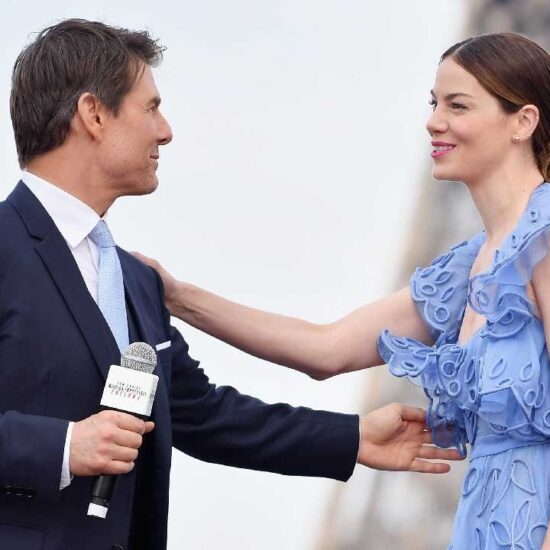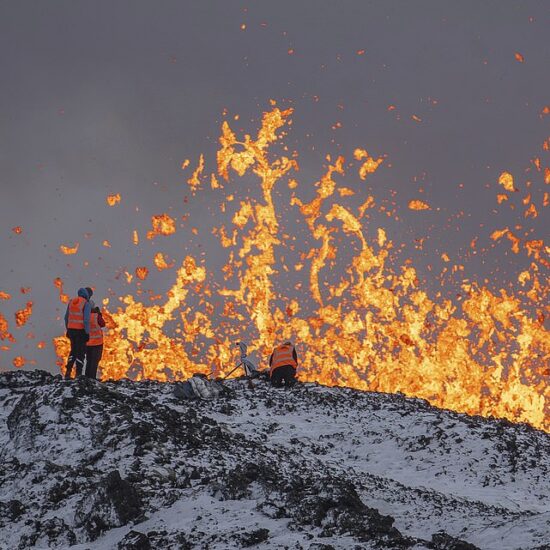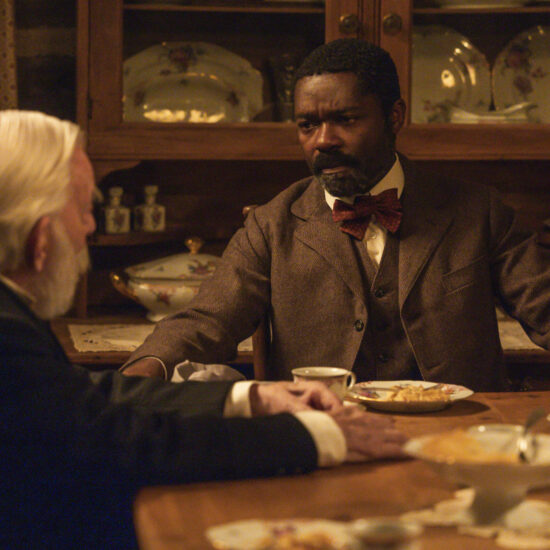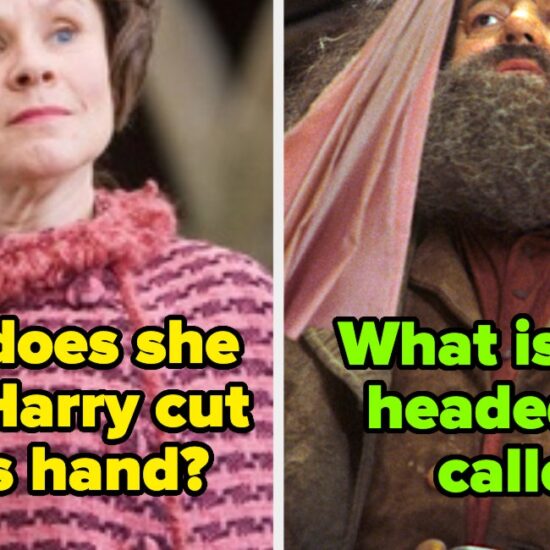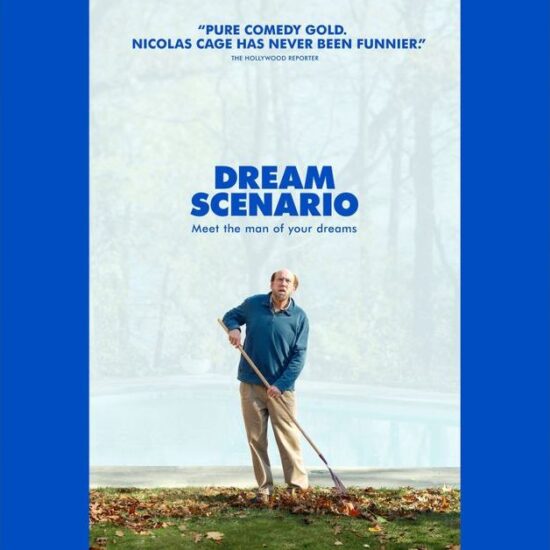
SPOILER ALERT: This story discusses major plot points from Episode 3 of HBO’s “The Last of Us,” currently streaming on HBO Max — as well as the 2013 video game of the same title.
For its first two episodes, HBO’s “The Last of Us” remains remarkably true to its source material, the 2013 Playstation 3 video game widely regarded as one of the best ever made. For the show — which was just renewed for Season 2 after debuting to record ratings — co-creators and executive producers Neil Druckmann (who also created the game) and Craig Mazin (“Chernobyl”) did introduce a few strategic deviations from and expansions to the game. But the core storyline of hardbitten smuggler Joel (Pedro Pascal) and his quick-tempered teenage charge Ellie (Bella Ramsey) has remained very much intact.
That is, until Episode 3.
Titled “Long Long Time,” the episode, which premiered on Sunday, is mostly spent in flashback and away from Joel and Ellie, focusing instead on the nearly 20-year relationship between Joel’s smuggling compatriots, Bill (Nick Offerman) and Frank (Murray Bartlett). Written by Mazin and directed by Peter Hoar (“It’s a Sin”), it is easily one of the most extraordinary episodes of television in recent memory, managing to capture in its 75-minute runtime the full arc of Bill and Frank’s profound connection to each other in all of its complexity.
When Variety spoke with Offerman and Bartlett about the episode, they had already heard effusive praise for “Long Long Time” from multiple people, and Offerman was especially giddy about it.
“I just want to say, this has never happened to me in my life!” the actor said with an impish grin. “It’s crazy!”
What is perhaps most remarkable about the episode is that the way Bill and Frank’s relationship unfolds — and especially the deeply moving way it concludes — upends everything fans of the game know about the two characters.
In the game, Joel and Ellie meet up with Bill when they arrive at the small Massachusetts town that Bill — a misanthropic survivalist — has booby trapped to ward off other humans as much as the infected zombies roaming the landscape. The three of them then escape a horde of infected by running inside an empty house, where they discover Bill’s partner, Frank, has hanged himself after he’d been bitten. It turns out that Frank was trying to leave town without Bill, a point Frank makes quite clear in a poison pill suicide note addressed to his erstwhile longtime companion:
“I want you to know I hated your guts. I grew tired of this shitty town and of your set-in-your-ways attitude. I wanted more from life than this and you could never get that. … I guess you were right. Trying to leave this town will kill me. Still better than spending another day with you.”
The show takes pretty much the opposite approach. Not only do we see how Bill and Frank first meet and fall in love, we see them build a life together over two decades. Frank is still exasperated by Bill’s stubborn and controlling nature, but they remain devoted to each other, even as Frank’s body begins to deteriorate — not from a bite by an infected, but from an undiagnosed neurodegenerative disease. When Frank, now in his 70s, announces he wants to end his life humanely, Bill realizes his life isn’t worth living without Frank. So they choose to die together in bed.
When Joel and Ellie arrive at Bill and Frank’s home a month or so later, they also find a note, only it’s from Bill and addressed to Joel, and it strikes a much different tone:
“I never liked you, but still, it’s like we’re friends, almost. And I respect you. So I’m going to tell you something because you’re probably the only person who will understand. I used to hate the world and I was happy when everyone died. But I was wrong, because there was one person worth saving. That’s what I did. I saved him. And then I protected him.”
Mazin, Druckmann, Hoar, Offerman and Bartlett all spoke with Variety about how this episode came together, why it diverged so much from the game, and what it does — or doesn’t — portend for the rest of the series.
HBO
“It was a worthwhile change because of what we were getting in return.”
When Druckmann first created Bill for the game, he says he had a basic understanding of how his relationship with Frank unfolded in the years before Joel and Ellie encounter him.
“I had pictured how they live together, and how they adhere to different philosophies as far as what they want out of life,” Druckmann said. Whereas Bill focused all his energy on being a “survivor,” Frank “needed more out of life.”
“That became friction that eventually split them up,” Druckmann said.
In adapting this storyline for the show, however, Mazin’s ability to break away from Joel and Ellie’s perspective meant he could jump back in time so audiences could actually meet Frank and get to know the two men as a couple.
“It seemed like such a rich and yet unseen story,” Mazin said. “It afforded us a chance to look at how time passed, but also to ask a question about what happens if you’re safe. I was just fascinated by the idea of Bill, as somebody who had created a place of safety, and then here comes Frank crashing in. From there, it just went differently in my head than what was there in the game.”
Druckmann smiled. “Craig had some crazy ideas about what we should do with these two characters,” he says. “As soon as he pitched them, I fell in love. It was just beautiful. It felt it was a worthwhile change because of what we were getting in return.”
Mazin has made other adjustments from the game to the show, including significantly reducing the amount of violent combat the game contains, and shying away from using spores as the primary mechanism for spreading the fungal apocalypse. All of it has been done not just with Druckmann’s endorsement, but his active participation.
“What’s great about Neil is that he’s never like, ‘What the fuck?’” Mazin said. “He’s: ‘OK, let’s talk it through it and think it over.’ I never have to worry that I’ve done something that will break ‘The Last of Us.’”
For their part, neither Offerman nor Bartlett was familiar with the game before they were cast for the series, but they were both relieved when they learned the show had totally changed how Frank and Bill’s relationship ends.
“It was highly preferable,” Offerman said.
“I agree!” Bartlett said.

HBO
“Frank’s an out and proud gay man, but Bill is Bill.”
Mazin said he wanted to “bring as many gay men into the process as possible” for “Long Long Time” given it was about “a story of middle-aged gay romance.”
“In this case, we had an embarrassment of riches,” he said, including editor Timothy A. Good, producer Cecil O’Connor, and especially director Peter Hoar. Mazin said Bartlett brought the producers to tears in his audition to play Frank, “and then a few months later, ‘White Lotus’ comes out, and I’m like, ‘Oh, man, did we win the jackpot here!’”
Initially, Con O’Neill had been cast to play Bill, but scheduling conflicts with a different show O’Neill was shooting for HBO Max kept him from joining the “The Last of Us” shoot outside of Calgary. (“Oh that damn ‘Our Flag Means Death’!” Mazin said, shaking his fist.)
So instead, Mazin and Druckmann turned to Offerman, who had never played a gay role before. Since Bill had also never been with a man before meeting Frank, “Nick’s innate kind of newness to this helped,” Mazin said.
Hoar agreed. “Frank’s an out and proud gay man, but Bill is Bill,” he said. “I think we can debate on what his identified sexuality could be forever, because it isn’t simple.”
Offerman did not seem to have much if any trepidation about playing Bill, including the scene where Bill and Frank have sex for the first time.
“It’s the most intimate, private moment that you’re trying to create with a scene partner — you know, with 16 people standing four feet away, scrutinizing your every move,” he said. “So that discomfort was easy to channel into the unease and vulnerability that Bill felt in that moment.”
For Bartlett, the scene was also an opportunity to create a joyous moment within a series filled with so much unrelenting dread and misery. “In a world that’s monstrous and alienating, the opportunity to show intimacy allows it to be even more poignant,” he said. “I felt kind of reverent — if that’s the right word — about just wanting to do justice to the intimacy in these scenes. I think we both did.”
Mazin, meanwhile, struggled with unearthing the song that first brings Bill and Frank together. “I knew that song needed to hit certain things about longing and aching and endlessly unrequited love,” he said. “I could not find the right song for the life of me. I was trying and trying, and then I texted my friend Seth Rudetsky, who is the host of Sirius XM on Broadway and a savant. I told him, ‘Here’s all the things I need,’ and two seconds later: ‘Linda Ronstadt, “Long, Long Time.”’ I was like, there it is. That’s it!”

HBO
“I remember being blown away at the amount of propane they had.”
Offerman’s last-minute casting, on top of COVID restrictions, meant the two actors, who’d never met before, had no opportunity to build a rapport before filming.
“It’s this incredibly well-outfitted boat, and were the two sailors brought on board,” Offerman said. “And they’re like, ‘OK, you guys know how to sail? All right, here’s some ropes. Go for it.’”
The lack of prep time was more than made up for by the length of the shoot, which ran for a month in September 2021.
“It’s sort of like a feature,” Bartlett said, his eyes wide. “It’s 75 minutes. It seems kind of luxurious.”
Offerman leaned toward the Zoom camera. “They just told us that this episode has been accepted into the Berlin Film Festival,” he said, jokingly.
By necessity, the production had to create Bill’s town from scratch, erecting a backlot for the exteriors that was then augmented further with visual effects.
“There was loads of layers to all of this, which I also love because it’s a huge, huge undertaking,” said Hoar. The town had to fall into disrepair under Bill’s neglect, then rejuvenate after Frank moves in — and then deteriorate again as Bill and Frank become more infirm.
“There were no roofs on any of the buildings, so the VFX department had to add all those in every shot, and then they also had to degrade the edges of the roads because they would have been overgrown with weeds and cracks and in the sidewalks,” Hoar said.
Most of the interiors were shot on a soundstage, but for the biggest action sequence of the episode — in which a gang of bandits try, and fail, to break past Bill’s explosive defenses in the dead of night during a rainstorm — Hoar had an idea that made things even more complicated: “I said, ‘Wouldn’t it be great if the front room of Bill’s house was on the location as well as back in the stage, because then I could actually go in one shot from in to out and back in again?’”
Hoar also wanted to keep the sequence as realistic as possible, so he lit it only with the balls of fire from Bill’s booby traps and occasional flashes of lightning.
“I remember being blown away at the amount of propane they had,” Offerman said. “They kept having to make these fireballs, and I was like, ‘Where are you getting all of this gas?!’”

Peter Hoar (center) on the set of “The Last of Us” with Nick Offerman (left) and Murray Bartlett (right)
Liane Hentscher / HBO
“They have had the best apocalypse out of all the characters.”
Well before he was approached to direct “Long Long Time,” Hoar had played “The Last of Us” and loved it. But for the series, he was especially taken with how Mazin and Druckmann had used Bill and Frank’s story as a respite from the “emotionally draining” aspects of the game that made him feel like “human beings are shit,” rather than leaning into it.
“They have had the best apocalypse out of all the characters,” he said. “They had 20 good years with each other. They had a safe space — relatively safe space. They had strawberries! It’s a beautiful story of hope.”
That included the decision for Frank to become afflicted with a degenerative illness rather than get bitten by an infected, as he is in the game.
“You can’t always present death as this failure,” Mazin said. “Sometimes, it’s just the natural conclusion. That is part of growing old. It was important to me to show the span of a relationship accounting for that. And it not being presented as a tragic loss, but rather the culmination of something beautiful.”
The discovery of Frank’s body in the game helps to establish its overall downbeat outlook on human nature. But even though the show utterly changes Frank’s fate from the game, Druckmann was quick to note that it doesn’t signal the show will also have a sunnier view of humanity.
“There is beauty in the world and there are relationships that work out, but we do have other examples of what you stand to lose in this world,” he said. “So this was a great counterpoint of what you stand to gain in this very beautiful way.”
For Bartlett and Hoar, it was also the chance to depict the full arc of a same-sex relationship in a way rarely if ever depicted in film and television.
“It’s amazing in one episode of television to be able to tell, not only a complete story, but with such detail and over such a long period of time,” Bartlett said. “It was just such a wonderful opportunity. You get all the lows and highs of a relationship.”
Added Hoar, “I also had never seen — let’s call it a middle-age [gay] relationship. That was really important to me now that I’ve hit that age myself.”
Mazin sees both the specificity and the universality in Bill and Frank’s story. “Even though I’m not a middle-aged, married gay man, I’m a middle-aged, married man,” he said. “And I wanted to tell a story about the length of commitment and the kind of love that happens after time, real time. That is a relationship that you don’t see portrayed much. And I think it ought to be.”
VIP+ Analysis: PlayStation’s Plan for HBO’s ‘The Last of Us’









